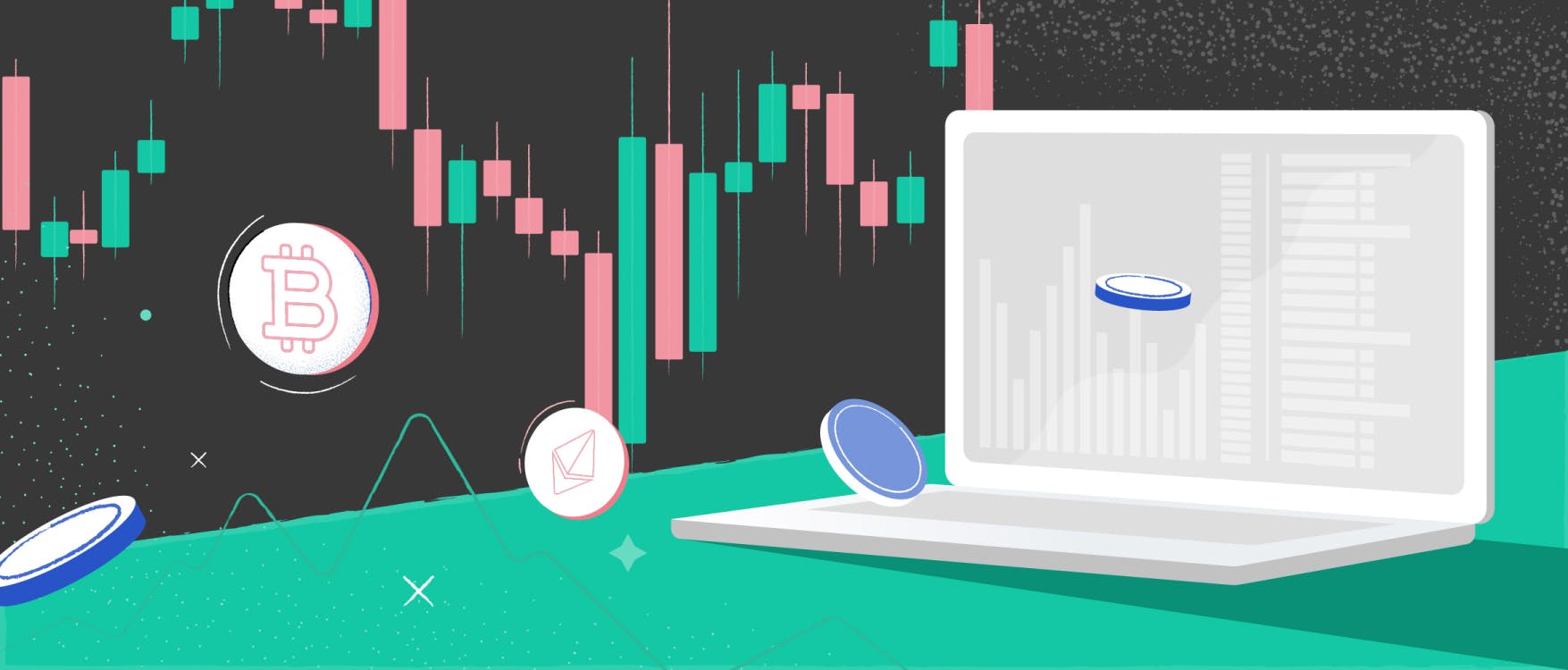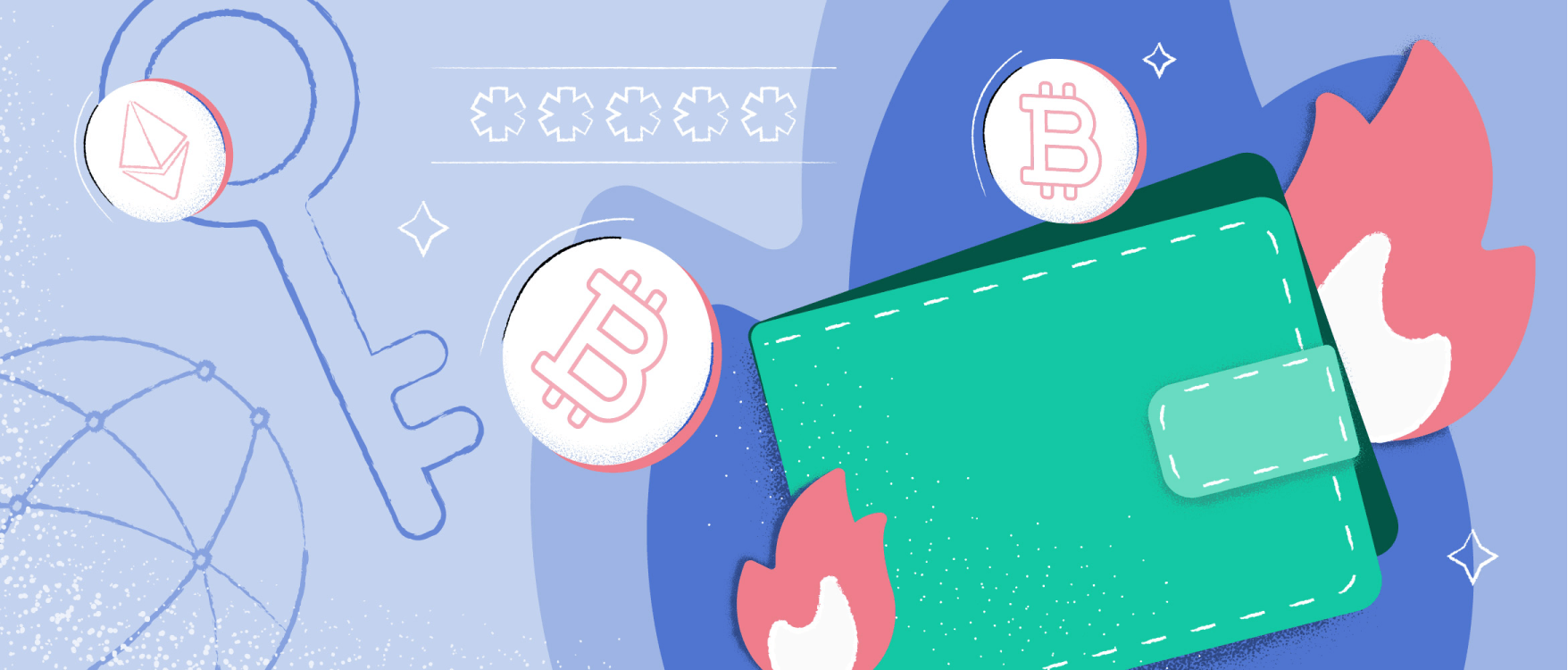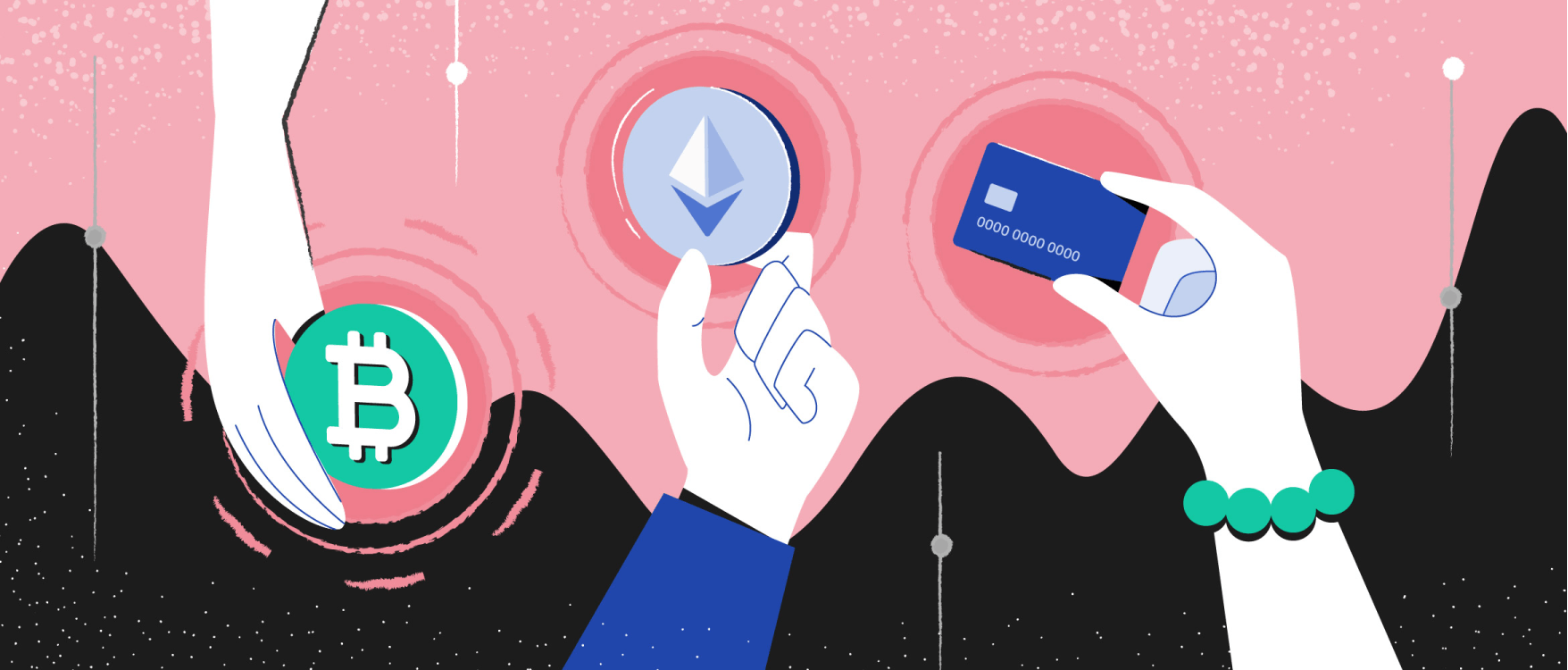
- All
- Analytics
- Technical Analysis
- Trading
- Blockchain
- DeFi
- Guides
- Company News
- Educational
- Opinion
- Price Predictions
- Tools
- Market News
- News
- Trading cases
- Practical guides
- Exchanges
- Trading signals
- Cryptocurrency
- Crypto bots
- Other
Become a crypto master
Learn everything about crypto,
trading and bots

What Is Crypto Trading? All You Need to Know in Plain English
Chances are, you've already heard something about сryptocurrency. So, if you're now thinking of trying to earn some money on it but don't know where to start, you've come to the right place. In this introductory guide, we’ll tell you how crypto trading works and how you can hop on board.
Start Trading on 3Commas Today
Get full access to all 3Commas trading tools with free trial period

What is crypto trading?
The idea of crypto trading is pretty similar to classic stock trading. A trader makes money on short-term trades on the stock market; a crypto trader does the same but on crypto exchanges. The goal is to bank on the crypto that will go up in price and earn on the difference. In other words, buy low and sell high.
After being an investment underdog for almost a decade, today, cryptocurrencies have a bit more recognition and liquidity. However, there are still a lot of controversies, spiced up by dramatic crackdowns that can happen after a single tweet. This is an example of volatility.
Volatility is a measure of how returns on a particular asset are scattered over time.
Usually, the more volatile the asset, the riskier the investment, and crypto is super volatile. However, for trading (as opposed to long-term investments in stock, ETF, and bonds) volatility is a good thing. The essence of trading is making money on market fluctuations, because they’re what give traders a chance to make money.
A trader’s task is to quickly analyze all the available data and decide if a position is worth entering or not. Let's say Ethereum (ticker ETH) is at $1,908.91, and two hours later it’s at $1,931.25. In this example, the trader must choose between buying ETH at $1,931.25 in hope of further growth, and selling it to cash in before it falls.
How to choose cryptocurrencies for trading
3commas has counted over 5,000 different cryptocurrencies on the market, and some of them cost a lot more than others. Here are the prices of some of the major cryptos at the time of writing:
Cryptocurrency | Price |
|---|---|
Bitcoin | $38,042.22 |
Ethereum | $2,699.78 |
Dogecoin | $0.344708 |
Litecoin | $191.77 |
The value of each cryptocurrency can also be measured and compared with others by their market capitalization.
Market capitalization, or market cap for short, is the total value of all the coins mined, in U.S. dollars. You can get it by multiplying the total number of coins in circulation by the price of a coin.
There are lots of places you can check out market capitalization charts. They usually show a price for a coin with fluctuations, current circulating supply, and market cap. If you check out the chart below, you’ll see that despite numerous price crashes, Bitcoin beats all the other coins, including Ethereum, Dogecoin, Cardano, and Ripple:
Which currency should you go for? Since we’re talking about trading in this article, meaning it’s all about short-term deals, the answer is whichever currencies you’ll be able to sell. To begin with, you may want to look at the top 20 coins to play it safe, and then start exploring something new.
Where to trade cryptocurrency: Crypto exchanges
Cryptocurrencies are usually purchased on exchanges. By analogy with stock exchanges, where you can trade in traditional currencies, there are exchanges that specialize in trading cryptocurrencies.
A cryptocurrency exchange is a marketplace that allows you to buy and sell coins and exchange them one for another, or for other assets like fiat money.
Getting started with an exchange is simple: you need to create an account, get verified, and then you can start buying and selling the coins of your choice.
There are over 300 exchanges as of today, but according to CoinMarketCap the top five are:
- Binance
- Coinbase Exchange
- Huobi Global
- Kraken
Crypto exchanges are usually evaluated by their security, traffic, number of coins traded, trading volumes, and average liquidity. It’s also good to know what kind of fiat currencies they support to cash out and what the fees are.
Let’s have a closer look at Binance as an example. As of May 2021, it’s ranked #1 in terms of the trading volume. It charges from 0.02% to 0.10% as purchase and trading fees, from 3% to 4.5% for debit card purchases, free Single Euro Payments Area (SEPA) transfers, or $15 per U.S. wire transfer.
The choice of an exchange can also depend on the trading strategy you choose. Some offer more features for day traders, others have special savings accounts for hodlers (a term that came from a misspelling of “hold”), or those who prefer to buy crypto and hold their positions regardless of price. But, in fact, you can trade on several exchanges at a time; it’s not prohibited.
Where to keep your cryptocurrency: Digital wallets
When you sign up with an exchange to start trading, you need to transfer money into your account. There are two options to do that: you can deposit fiat currencies (such as dollars or euros) directly from your bank card, or you can first create a digital wallet, transfer your money there, and then use it as a major place for keeping your funds.
A crypto wallet is a program that allows you to send, spend, and receive cryptocurrency. Just like bank cards, crypto wallets don’t actually store your coins, but give you access to them using a private key: a unique combination of letters and numbers.
Wallets usually have a fixed rate that applies whether you're buying or selling. Getting started is easy: all you have to do is link your bank card to your wallet, and you're all set.
Why have and pay for a wallet when you can top up your account directly? One of the obvious reasons is paying fees. For example, Binance charges 3.5% per transaction or $10 USD, whichever is higher; Coinbase charges 3.99%. For example, if you transferred $1,000 from your debit card, you’d pay $35-$39.90 on top of that. But there’s an even more important reason why you should consider having a wallet: security.
There’s a catchphrase among crypto investors: “Not your keys, not your coin.” Although exchanges, in general, are quite secure platforms where crypto trading regularly takes place, they are not 100% error-proof, and sometimes there are issues with server failures (overload). The latest example is the crash of the Robinhood platform after Doge’s surge caused by a tweet from Elon Musk.
In addition, exchanges run the risk of being hacked or, who knows, being shut down by the government. So the rule of thumb is to have smaller sums in your exchange account for the sake of trading, while keeping the major funds elsewhere, for example in a cold wallet.
Hot and cold wallets
There are two types of wallets: hot and cold. The difference between them is the level of security provided.
Hot wallets are online platforms, desktop or mobile apps that are connected to the internet. This means they’re potentially hackable, but still, they’re very convenient for trading: you can buy and sell fast and on the go. If you have small amounts of crypto at the moment, you might be willing to take the risk for the sake of convenience.
Cold wallets are physical devices that somewhat resemble external Flash drives. They aren’t connected to the internet, so they can hardly be hacked remotely.
Regardless of the type of wallet, it’s crucial to make sure your keys are safe. If you lose your keys, you will lose all the coins related to those keys.
Getting started as a crypto trader: Basic flow
Let’s imagine you decide to start trading on a crypto exchange. Here’s what a basic trading flow will look like:
Step 1: Choosing a crypto exchange platform.
Step 2: Creating a deposit and topping it up.
Step 3: Selecting the currencies you’re interested in.
Step 4: Placing an order so the platform can find a seller or buyer. When the platform completes the order, it charges a fee for its services.
Step 5: Withdrawing funds to your wallet or bank card.
Does that crypto trading flow look simple? Well, it is! The main challenge is to choose the right asset at the right time. Also, check out our guide on how to trade cryptocurrency to learn more about each step.
FAQ
Crypto trading is making money on short-term trades on crypto exchanges. The goal is to buy low and sell high.
To start trading, you’ll need to choose an exchange and buy coins. The process of selling and buying is simple; the main challenge is to choose the right asset at the right time.
The rule of thumb is to have smaller sums in your exchange account for the sake of trading, while keeping the major funds in external wallets.
Crypto Trading in 2023: Harnessing the Power of 3Commas DCA and GRID Bots
In the multifaceted domain of cryptocurrency trading in 2023, innovative trading solutions such as 3Commas have emerged as essential tools for both novice and seasoned traders. The adoption of automated trading bots like Dollar Cost Averaging (DCA) and GRID bots provided by 3Commas has revolutionized trading strategies, optimizing profitability and mitigating risks.
Crypto Trading Landscape in 2023
The crypto market in 2023 is characterized by unprecedented dynamism, diversity, and a high degree of volatility. With a plethora of digital assets available, traders are leveraging advanced technologies and algorithmic strategies to navigate the complex market conditions and exploit lucrative trading opportunities.
3Commas DCA Bots: Mitigating Risks
3Commas’ DCA bots are pivotal for traders seeking to mitigate the inherent risks of the volatile crypto markets. The DCA bots automate the buying of assets at predetermined intervals, ensuring that traders can spread out their purchases and mitigate the impact of market fluctuations. This strategic approach allows traders to avoid making impulsive decisions based on short-term market movements and instead focus on a long-term accumulation strategy, reducing the average purchase cost over time.
3Commas GRID Bots: Exploiting Market Fluctuations
The GRID bot is another noteworthy innovation by 3Commas, designed to exploit the natural oscillation of cryptocurrency prices. It divides the price chart into multiple grids and simultaneously places buy and sell orders at each grid level. This allows traders to capitalize on every market movement, making profits from the fluctuations and ensuring that no trading opportunity is missed.
Benefits of 3Commas Bots
- Optimized Profitability: Automated bots execute trades with precision and speed, optimizing entry and exit points, thus maximizing potential profits.
- Risk Management: The DCA and GRID bots operate under predetermined settings and limits, managing risks by avoiding impulsive and emotionally-driven decisions.
- Time Efficiency: The automation allows traders to allocate their time more efficiently, freeing them from the need to constantly monitor the markets.
- Enhanced Accessibility: 3Commas provides an intuitive interface and a suite of tools that are accessible to traders of all experience levels, democratizing access to advanced trading strategies.
- Market Coverage: With the ability to operate 24/7, the bots ensure that traders do not miss out on opportunities that may arise in different time zones.
Conclusion
Crypto trading in 2023 has transcended beyond mere speculation, evolving into a sophisticated realm characterized by strategic and algorithmic trading. The incorporation of 3Commas DCA and GRID bots has brought forth a paradigm shift, enabling traders to navigate market volatilities with mitigated risks and enhanced profitability. The automation, precision, and accessibility provided by these bots are instrumental in democratizing advanced trading strategies, heralding a new era in cryptocurrency trading.

A proven leader, successful at establishing operational excellence and building high-performance teams with a sharp focus on value creation and customer success.




